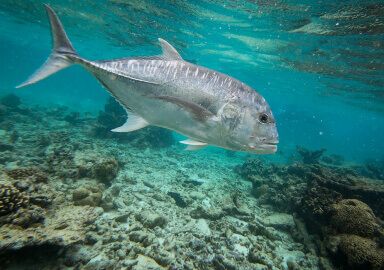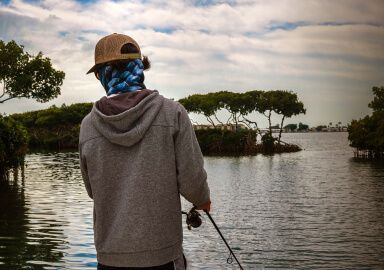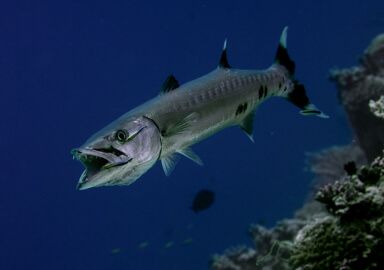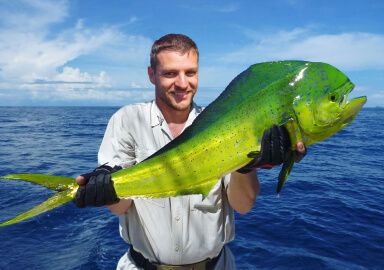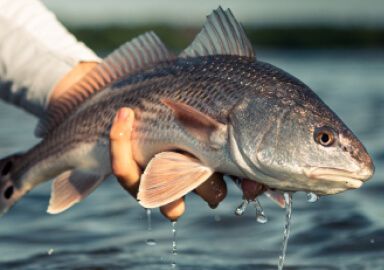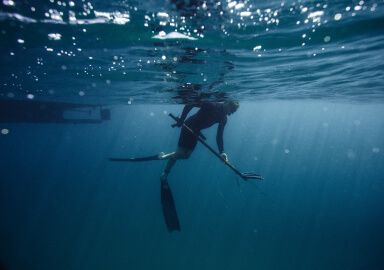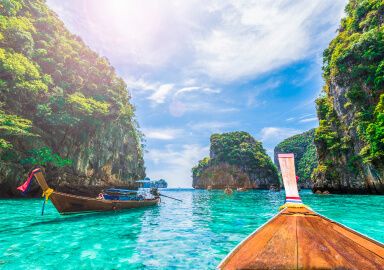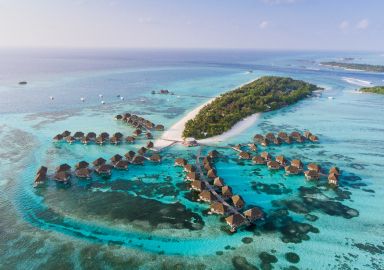Fishing in Indonesia
The biggest island nation located between the Indian and Pacific Oceans offers fishing opportunities that would exceed any expectations.
View 4 listings
4
listings
–
price starting from
15
fish species
–
to the nearest trip
About Indonesia
Indonesia is an enormous archipelago, located on nearly 17,000 islands. The biggest of those, Sumatra, Borneo, and Java, could each fit several such European countries as Hungary or Croatia, while others are hardly big enough to maintain a small village. The islands lie more or less over the equator, and do not have a large variation in climate. There’s the dry season between May and October, and the wet season from November to April, but for most islands the difference is not very marked.
The archipelago is located between Australia and Asia from South to North, and between Indian and Pacific Oceans from west to east. Apart from the oceans, Indonesia’s coastal waters include several seas, including the Andaman Sea on the northwest, the South China Sea on the northeast, the Arafura and Timor Sea in the south opposite Australia, as well as Java, Flores, Banda, Ceram, Halmahera, Molucca, and Celebes Seas which can be said to be Indonesia’s inner seas.
Any pelagic fish that would migrate from the Pacific to the Indian ocean or the other way round would have a hard time finding a route that doesn’t come through Indonesian coastal waters. Sedentary species can find an astounding diversity of habitats, from volcanic islands to coral reefs, and from trenches many thousand feet deep to flats. And we haven’t even started talking about the numerous rivers and lakes that, especially on Indonesia’s bigger islands.
Indonesia attracts thousands of tourists every year. Ancient cultures (in the plural, as the nation is astoundingly multicultural), amazing rainforests, beaches and lagoons, snorkeling, surfing, and sailing - there are lots of reasons to come to Indonesia, and the island of Bali become almost synonymous with “downshifting” in many languages. But as for the fishing opportunities - you could fish in Indonesia for a lifetime and still not explore them all.
Fishing Types
The angling life in Indonesia revolves around the sea. The crown jewel are the offshore trips for large pelagics such as tuna and marlin, which require careful planning: you have to know the specific time when your target species reaches Indonesian waters. Inshore, reef, wreck, and flats fishing are all at your disposal, as well as shore fishing and fishing in the mangroves.
River and lake fishing is possible too, and offers exciting and exotic opportunities, fishing for native species like black bass or snakehead. Similar as in neighboring Thailand, Indonesia offers freshwater fishing in stocked ponds. There you can catch some native fish, as well as introduced freshwater giants such as arapaima.
Targeted Fish Species
Indonesian waters feature almost any underwater ecosystem known to science: corals, estuaries, mangroves, seagrass beds, mudflats and tidal flats - you name it, Indonesia has it. It is no surprise that there you can find a great variety of fish species as well. Some of those only visit the local waters in passing - those include the pelagic species such as king mackerel, bluefin and yellowfin tuna, the blue and black marlin, sailfish, wahoo and mahi-mahi. Others make it their permanent home.
To name all of the 1,500 species of fish that inhabit Eastern Indonesia alone would result in a very long and boring list, so let’s name only the ones that are the most attractive to recreational anglers. The giant trevally is found in abundance on Indonesia’s coral reefs. So is the red snapper, locally known as ruby snapper - the biggest, brightest, and allegedly tastiest of the fishes that bear the name. Groupers await their prey in ambush, and colorful coral trout sneak around the corals. Barracuda, rockfish, redfish - even the local guides can’t always remember every species you can catch.
Fishing Techniques
The diverse peoples of Indonesia have developed several fishing techniques, most of which, however, are not well aligned to recreational angling. Excluding those that imply nets and traps, the most popular methods locally are simple pole-and-line fishing, as well as bottom fishing with a handline and live baits. That is often done at night, with a light source used to attract the fish.
Baitcasting and bottom fishing with bait are often seen as a simple way to catch something for dinner, while spinning, popping and fly fishing are perceived as more sporting. Trolling with heavy tackle is the technique of choice for pursuit of marlin, tuna, and other big-game fish. Spearfishing around coral reefs can be thrilling, especially given the environments it takes you to (bear in mind that spearfishing in scuba gear is illegal).
Accompanying local fishermen on their traditional boats, or jukungs, is often recommended for beginners and those looking for more affordable experience. Here you can not only catch your own dinner, but also learn the indigenous methods passed down through generations. Book a specialized fishing charter for a more sophisticated experience.
